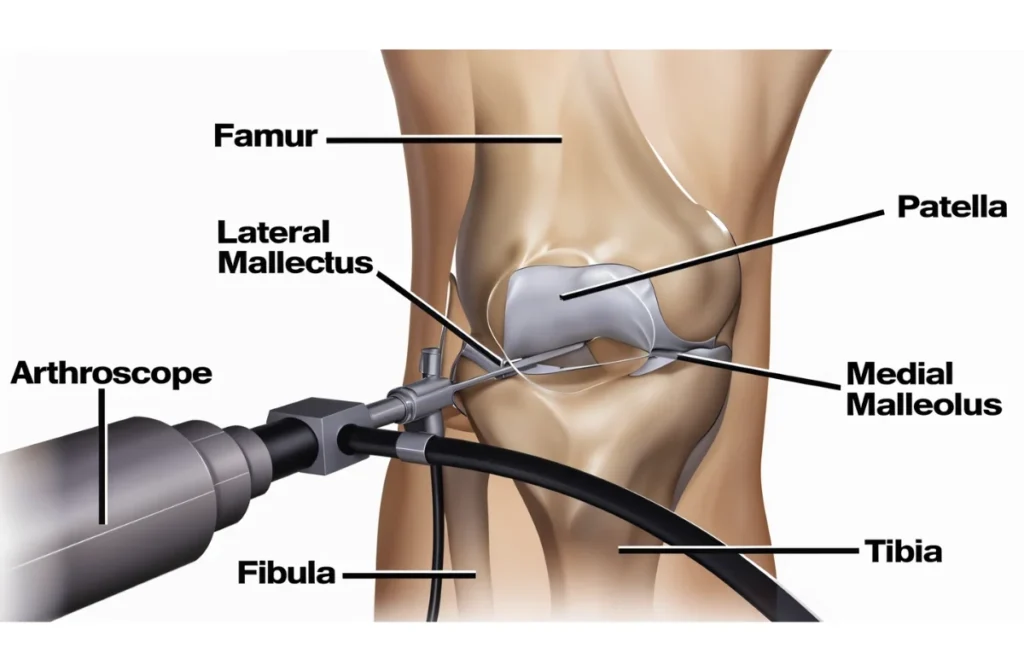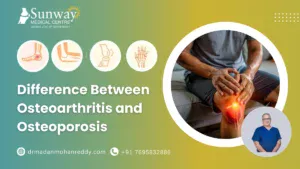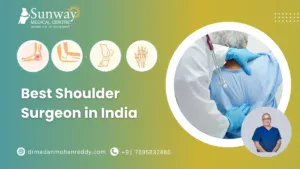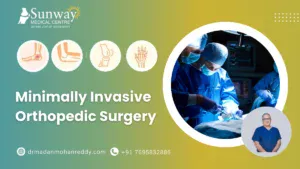Orthopedic conditions can significantly impact mobility and quality of life, often requiring surgical intervention. Traditional orthopedic surgeries, while effective, involve large incisions, prolonged recovery periods, and higher risks of complications. However, with advancements in medical technology, Minimally Invasive Orthopedic Surgery (MIOS) has emerged as a revolutionary approach to treating various musculoskeletal conditions. This modern surgical technique uses smaller incisions, specialized instruments, and advanced imaging technology to ensure precision and faster healing.
MIOS is particularly beneficial for patients undergoing joint replacements, spinal surgeries, and ligament repairs. By reducing tissue damage and promoting advanced bone healing techniques, this method enhances recovery, minimizes post-operative pain, and improves overall patient outcomes. This article explores the key benefits, common procedures, recovery process, and the role of post-surgery pain management in ensuring a smooth rehabilitation journey with Minimally Invasive Knee Replacement techniques.
Understanding Minimally Invasive Orthopedic Surgery
Minimally Invasive Orthopedic Surgery refers to surgical techniques that utilize small incisions, specialized cameras, and robotic assistance to treat bone, joint, and soft tissue disorders. Unlike traditional open surgeries, MIOS reduces trauma to surrounding muscles and ligaments, leading to shorter hospital stays and quicker recovery times. Surgeons use arthroscopic or endoscopic procedures to visualize and repair damaged structures with high precision.
Key Features of MIOS:
- Small incisions, typically less than 2 inches.
- Use of specialized cameras for enhanced visualization.
- Reduced blood loss and minimal scarring.
- Faster post-operative recovery and rehabilitation.
With the integration of advanced bone healing techniques, patients experience improved surgical outcomes and a quicker return to normal activities.

Benefits of Minimally Invasive Orthopedic Surgery
Patients undergoing Minimally Invasive Orthopedic Surgery experience numerous advantages over traditional surgical methods.
Faster Recovery Time:
MIOS significantly reduces recovery periods, allowing patients to regain mobility and return to daily activities sooner.
Less Pain and Discomfort:
With minimal tissue damage, patients require fewer pain medications, making post-surgery pain management more effective.
Lower Risk of Complications:
Smaller incisions in Minimally Invasive Orthopedic Surgery reduce the risk of infections, blood clots, and nerve damage..
Minimal Scarring:
Since incisions are smaller, the aesthetic outcome is better compared to conventional surgeries.
Shorter Hospital Stay:
Most MIOS procedures are performed on an outpatient basis, allowing patients to recover at home.
By incorporating advanced bone healing techniques, surgeons further enhance the healing process, ensuring optimal results.
Common Procedures Performed with Minimally Invasive Orthopedic
Arthroscopic Joint Surgeries
Arthroscopy is a widely used MIOS technique that involves inserting a tiny camera into the joint through a small incision. This allows surgeons to diagnose and repair joint issues without open surgery.
Common procedures include:
- Knee arthroscopy for meniscus and ligament injuries.
- Shoulder arthroscopy for rotator cuff repair.
- Hip arthroscopy for labral tears and impingement.
Minimally Invasive Spine Surgery (MISS)
MISS is used to treat spinal conditions such as herniated discs, spinal stenosis, and scoliosis. This technique involves smaller incisions, reducing the impact on muscles and nerves.
Benefits include:
- Reduced post-operative pain.
- Faster mobility restoration.
- Lower risk of spinal instability.
Minimally Invasive Joint Replacement
Patients suffering from severe arthritis or joint degeneration can benefit from MIOS-based joint replacements.
Common joint replacement procedures include:
- Knee replacement using robotic-assisted surgery.
- Hip replacement with muscle-sparing techniques.
With post-surgery pain management strategies, patients recover more comfortably and regain function quickly.
Recovery Process After Minimally Invasive Orthopedic
The recovery journey after Minimally Invasive Orthopedic Surgery varies based on the procedure and individual patient factors. However, following proper post-operative guidelines can enhance healing and mobility.
Immediate Post-Surgery Care:
- Patients may experience mild discomfort, which is managed with pain medications.
- Surgeons monitor for any signs of infection or complications.
Physical Therapy & Rehabilitation:
- Gentle exercises begin within days to prevent stiffness.
- Strength training is introduced gradually to restore function.
Long-Term Recovery Goals:
- Most patients can resume daily activities within weeks.
- Full recovery is achieved within 3-6 months, depending on the procedure.
With advanced bone healing techniques, orthopedic specialists optimize recovery times and prevent complications.
Role of Post-Surgery Pain Management in MIOS
Effective post-surgery pain management is essential to ensure a smooth recovery after MIOS. Unlike traditional surgeries, MIOS reduces pain levels, but managing discomfort remains a priority.
Pain Management Strategies:
- Medications: Over-the-counter pain relievers and anti-inflammatory drugs help control post-operative pain.
- Cold Therapy: Applying ice packs reduces swelling and soreness.
- Physical Therapy: Strengthening exercises prevent stiffness and enhance mobility.
- Alternative Therapies: Acupuncture, massage therapy, and guided relaxation techniques aid in pain relief.
By following a structured pain management plan, patients can enjoy a faster and more comfortable recovery process.
Advanced Bone Healing Techniques for Faster Recovery
Incorporating advanced bone healing techniques into MIOS enhances the body’s ability to heal and strengthens surgical outcomes.
1. Biologic Therapies:
- Platelet-Rich Plasma (PRP): Boosts tissue regeneration and reduces inflammation.
- Stem Cell Therapy: Promotes natural bone healing and regeneration.
2. Nutritional Support for Bone Healing:
- Calcium & Vitamin D: Strengthen bone density and prevent fractures.
- Collagen Supplements: Aid in cartilage repair and joint health.
3. Bone Growth Stimulation Techniques:
- Ultrasound Therapy: Enhances bone regeneration.
- Electrical Stimulation: Accelerates healing by promoting cellular activity.
With these techniques, Minimally Invasive Orthopedic Surgery achieves faster recovery and long-lasting results.
Is Minimally Invasive Orthopedic Surgery Right for You?
MIOS is suitable for a wide range of orthopedic conditions, but not everyone is a candidate. Consulting an experienced orthopedic surgeon helps determine whether this technique aligns with your medical needs.
Ideal Candidates for MIOS:
- Patients with joint or spinal conditions requiring surgical intervention.
- Individuals seeking faster recovery with minimal complications.
- Athletes and active individuals needing precise surgical techniques.
A thorough medical evaluation ensures that patients receive the most appropriate and effective treatment.
Conclusion
Minimally Invasive Orthopedic is transforming the field of orthopedic care by offering less invasive yet highly effective treatment options for various musculoskeletal conditions. With reduced pain, faster recovery times, and enhanced surgical precision, MIOS is becoming the preferred choice for joint and spine surgeries. Additionally, the integration of advanced bone healing techniques and structured post-surgery pain management strategies further optimize patient outcomes. As medical technology continues to advance, Minimally Invasive Orthopedic Surgery (MIOS) will play an even more significant role in improving mobility, reducing complications, and enhancing overall quality of life. If you’re considering orthopedic surgery, consulting the best orthopedic doctor in Chennai can help determine whether MIOS is the right option for you.




